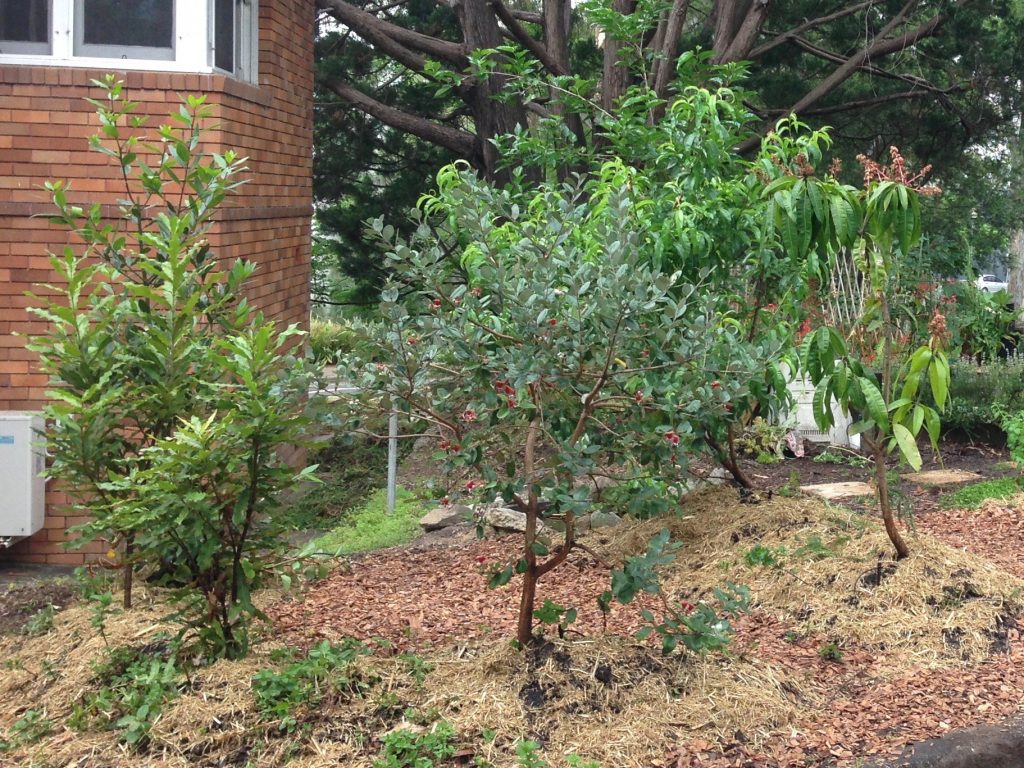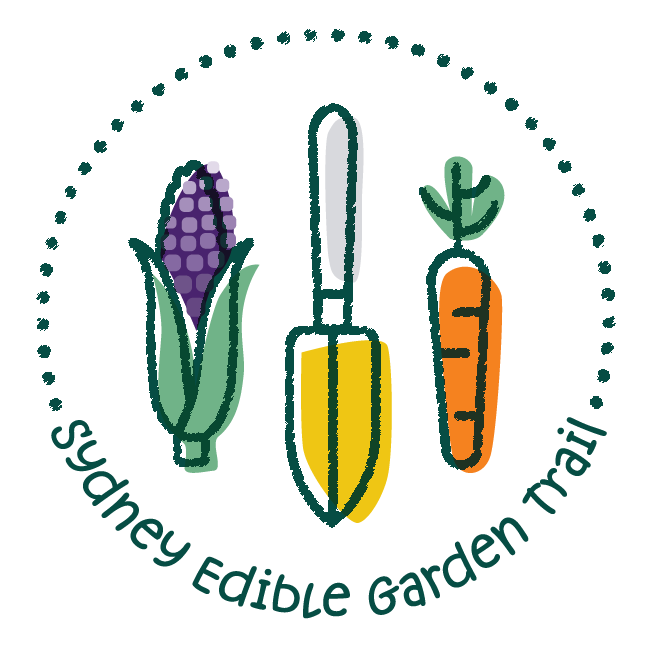
A food forest is a collection of trees that produce edible fruit, nuts, seeds and berries. They are planted together with other smaller trees, shrubs, herbs and climbers that support and complement the trees. Ideally a well-designed and diverse food forest needs little if any human intervention once they are well-established – no mowing, weeding, digging, or battling with pests!
A food forest copies natural forests by using multiple layers and making the most of both horizontal and vertical space. It is typically made up of:
- The top or canopy layer – tall trees fruit and nut trees, like mango, macadamia nut.
- A layer of shorter trees – typically dwarf fruit trees like lemons and oranges.
- Shrubs – like currants and berries.
- Herbs – a range of herbs that provide food and medicines for humans as well as for chickens, other poultry, and bees and other insects, and benefit other plants.
- Ground cover – a living mulch that protects the soil, reduces water evaporation, and prevents weeds growing.
- Underground – the rhizosphere, or root zone, grows root crops, such as potatoes, carrots, ginger, turmeric, yacon, etc.
- The vertical space – Climbers and vines, which climb up trellises, fences, trees or other structures. This includes grapes, beans, passionfruit, kiwi fruit, and chokos.
A good food forest will give a home and food (nectar from flowers) to a range of predatory insects that keep pests, like fruit flies, under control. The diverse mix of different plants, including some that help control pests like marigolds, will help keep all the forest plants strong and healthy and reduce incidence of disease.
A food forest is a great area for chickens to forage, as they will help remove weeds, fallen fruit, and insect pests while also providing manure.
Check out Melbourne’s first urban backyard demonstration food forest.
